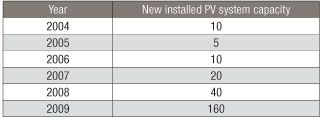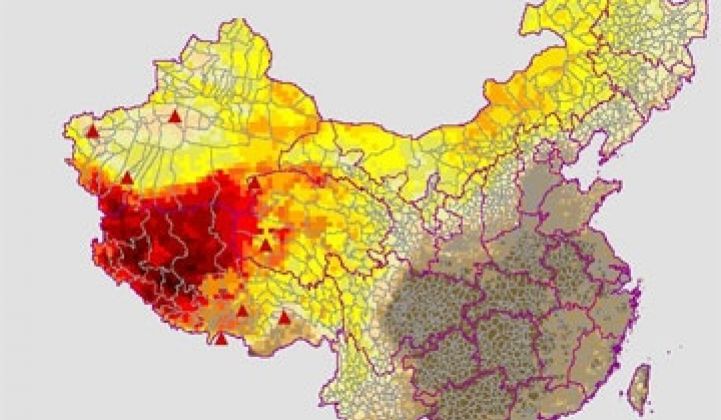Despite the fact that China led the world in clean energy investments last year, the Chinese government is now backing away from ambitious plans to plant megawatts of solar in the country.
Concerned by the high cost of solar -- which can be four times more expensive than fossil fuels -- and fears that solar power won't deliver on some of the anticipated goals, the Chinese government is not about to subsidize solar power on a national level, Shi Lishan, deputy director in China's energy bureau, said in an interview with Guangzhou's 21st Century CBH.com earlier this month.
A couple of weeks ago, the state-run China Securities Journal carried a similar report, saying that the funds shortage blocks the central government from introducing a feed-in tariff. Already, the government's annual subsidy for solar PV projects has hit RMB 7 billion, or more than US$1 billion, according to Wang Sicheng from China's National Development and Reform Commission, as quoted in the report.
In addition to the financial burden, the government also wants to prevent the Chinese solar PV market from overheating.
"Once the government sets up an attractive price for solar power purchasing, many companies would swarm into this market in hope of high returns, which will inevitably result in a large amount of low-end solar projects," points out Zeng Weiqiang, an analyst at Guangzhou-based GF Securities.
Because of the situation, some analysts have become hesitant about giving 2010 and 2011 forecasts for solar installations in China.
In 2009, through two major supportive programs, Golden Sun and the Solar Rooftop program, about 160 megawatts of solar PV systems were installed in China. That more than doubled the country's total installed capacity.
Another major factor that has rendered the Chinese government reluctant to unveil a feed-in tariff is the change in overseas demand. The global financial crisis froze China's export-oriented solar industry from late 2008 to early 2009, pushing the government to create alternate solutions such as developing the domestic market. Since then, the international market has rebounded, reducing the need for a domestic program.
Suntech Power Holdings, a leading Chinese solar PV manufacturer and one of the two largest such companies worldwide, estimates that China will account for only 5% of its total sales in 2010, while about 85% will go to Europe and North America, says Rory Macpherson, the company's investor relations director.
Unlike Suntech and other solar PV manufacturers, project developers who already have solar power plants in China are expected to get hurt.
"Obviously, this [lack of a feed-in tariff] means no profits for China's solar project developers," commented analyst Zeng. "As subsidies through the Golden Sun Program can cover only half of the upfront investment, those developers may break even or suffer losses."
If developers cannot get returns on their investment, it might be hard for China to achieve its planned 20 gigawatts PV installation capacity target by 2020, but the real question is whether this goal still exists or even remains realistic.
China's new energy industry development plan, which includes the nation's renewable energy targets for the coming decade, is still in discussion, and it will not be formally announced in the short term, local media quoted Mr. Shi, the senior official in the department in charge of solar, as saying.
"In my opinion, whether this plan will be issued and what the targets are for Chinese renewable energy is not the most important thing," Shi said.
Table: China’s new installed PV system capacity from 2004 to 2009 (Unit: MW)
Source: China National Development and Reform Commission



